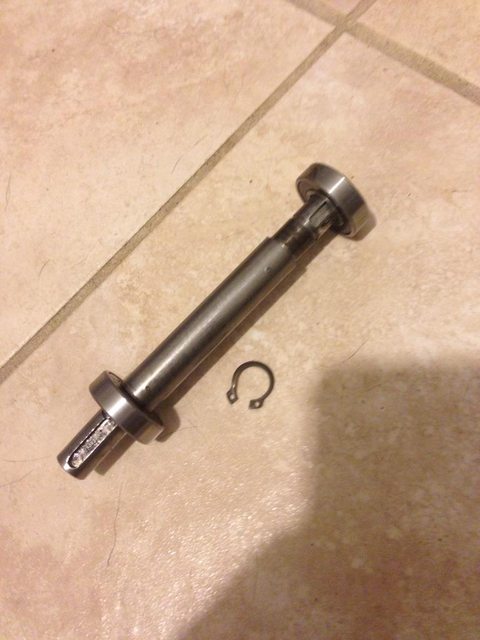So here's the pics of my rewire on the GNG motor.
I started with the hall wires. Here you can see the originals soldered to the PCB where the hall sensors are connected and the replacement 26AWG high-temp silicone wires I'll be using to replace them.
Here are the new wires soldered onto the PCB. I used a piece I had found on HobbyKing that had the 5-pin (JS2 I think its called) servo-style connector already wired up. It was the only male 5-pin I could find on the site, and I ordered it because I was getting the wires at the time and it was cheap. I ended up having to swap blue for white but since the other connector that plugs in here has the same colors it won't be a big deal to keep track of. The rest remained the same colors.
Next I moved to the phase wires. I trimmed back the originals as close as I could to the windings while still leaving enough to work with. For the phases, I used 14AWG high-temp silicone wires. This was the first time I tried to splice this high-strand wire onto more traditional stranded wire, and I had a bit of trouble keeping the wrap tight as I soldered, but it is still a strong connection, so I think it'll be fine.
Here's a pic of the 3-pin XT-60 connector I found on HobbyKing. It's designed for use with 14AWG, so the fit was perfect for this application. the connector is keyed, so there's no risk of connecting it in the wrong orientation. I labeled the corners as I was working on this so that there wouldn't be the chance of me soldering stuff on the other end in the wrong order. After the other side of the connector was soldered up, I cleaned off the ink.
This is a shot of the completed wiring before I tucked the wires into the opening in the case. You can see how much cleaner these connectors are compared to the stock stuff.
Since there was no way I'd ever be able to use the original rubber block that went around the stock wires with the new thicker wires I installed, I ran a bead of silicone around the case opening and seated the wires in it. I then squeezed a little more into and around the wires, and shaped it a bit with a toothpick. I left a little ridge at the side case face to help seal that area when i button the motor back up.
And here's a final shot of the completed rewire. I was really happy with how everything came together. It's the first time I replaced the phase and hall wires on a motor.









